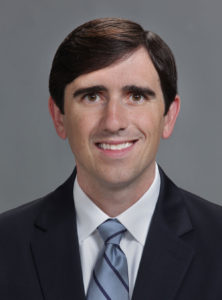Clavicle Fracture Specialist

Are you an athlete who participates in contact sports? If so, you may be at risk of sustaining a clavicle fracture. The clavicle, or collar bone, can be injured during sports activities, a fall, or a motor vehicle accident. Clavicle fracture surgeon, Dr. Robert Boykin provides diagnosis and both surgical and nonsurgical treatment options for patients in Asheville who have sustained a clavicle fracture.
Clavicle Fracture Overview
Collarbone (clavicle) injuries are common among athletes, especially those who are at risk for direct contact or falls (i.e. football players, gymnasts, cyclists, etc.). While these are common injuries, not all clavicle fracture are the same: the bone can break in multiple different patterns, some of which are more complex than others. Certain fractures will simply be a crack through the bone with both ends lined up, while others will break into multiple fragments of bone which is referred to as “comminution”. The term displacement refers to how far apart the ends of the bone are after an injury, and this makes a difference in healing. In severe cases, one end of the bone can poke through the skin causing noticeable bleeding and contamination of the bone and soft tissues. These fractures are referred to as “open” fractures. Shoulder surgeon, Dr. Robert Boykin specializes in the treatment of a clavicle fracture for patients in Asheville, Arden, Fletcher and surrounding North Carolina communities.
Many clavicle fractures can heal over time with the use of a sling and avoidance of activities for 6 to 10 weeks, especially those with minimal displacement and comminution. In more serious fractures or in cases where a comminuted, displaced, or shortened fracture exists, the bones will not line up as they should and thus surgery is typically recommended. Surgery will not speed up the healing process the clavicle, but rather aligns the bones so that they will heal in the proper position.
What is Clavicle Fracture Fixation?
The goal of clavicle fracture fixation surgery is to place the bones back in their original position and allow them to heal in a normal alignment. This surgery may be accomplished either by the use of plates and screws or by using a long pin in the center of the bone (intramedullary nailing). In fractures that need plating, this usually involves an incision over the top of the shoulder and placement of a plate and screws along the top of the clavicle. Fractures fixed with intramedullary nailing require smaller incisions, but this technique is not appropriate for all fractures that need surgery. Some patients request to have their hardware removed from the collarbone, but this is not allowed until after the fracture has fully healed.
Recovery Following Clavicle Fracture Surgery
Following surgery, patients are usually allowed to go home the same day. Dr. Boykin will prescribe a detailed physical therapy program so that the patient will begin to regain motion, function, and strength of the arm and shoulder joint. Recovery from clavicle fracture surgery often takes a few months and involves sling use and guided rehab.
For additional information on collarbone injuries or clavicle fracture fixation surgery, or to learn more about other injuries associated with the shoulder joint, please contact Dr. Robert Boykin, orthopedic shoulder surgeon serving Asheville, Arden, Fletcher and surrounding North Carolina communities.
